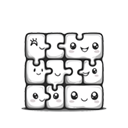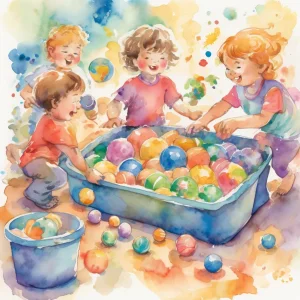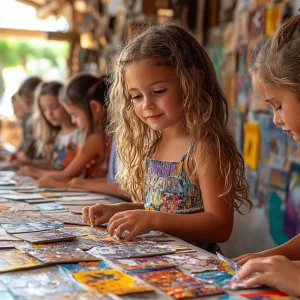Activity
Similar Activities
Animal Feast Adventure: A Whimsical Feeding Frenzy
Children’s Age: 5–8 years
Activity Duration: 10 – 25 minutes
An interactive activity where children feed toy animals with pretend food, promoting communication skills and adaptive development.
Activity Duration: 10 – 25 minutes
Bridge Builders: Eco Teamwork and Critical Thinking
Children’s Age: 8–9 years
Activity Duration: 10 – 25 minutes
An eco-conscious activity where children build bridges using popsicle sticks and tape to support toy cars, promoting teamwork and environmental awareness.
Activity Duration: 10 – 25 minutes
Sensory Exploration Journey: Household Items Adventure
Children’s Age: 0 month – 6 years
Activity Duration: 10 minutes
Let's explore different textures and shapes using household items! Find a big container and items like a wooden spoon, silk scarf, plastic cup, sponge, and cotton ball. Sit togethe…
Activity Duration: 10 minutes
Holiday Parade: Musical Social Skills Celebration
Children’s Age: 2–3 years
Activity Duration: 15 minutes
Get ready for the Holiday Music Parade! This fun activity is perfect for 2 to 3-year-old kids to enjoy music, march in a parade, and have a blast with holiday props. You'll need mu…
Activity Duration: 15 minutes
Sensory Valentine's Day Exploration: Heartfelt Play
Children’s Age: 6 months – 1.5 years
Activity Duration: 10 minutes
Explore the Sensory Valentine's Day Exploration activity for young children, offering a sensory-rich experience themed around Valentine's Day. Engage children's senses, social-emot…
Activity Duration: 10 minutes
Holiday Sensory Bag Exploration – Festive Adventure
Children’s Age: 1–1.5 years
Activity Duration: 5 – 10 minutes
Introduce your 12 to 18-month-old to a Holiday Sensory Bag Exploration for sensory play and development. Prepare a bag with gel/oil, holiday items, and tape for a secure setup. Gui…
Activity Duration: 5 – 10 minutes
Sports Sorting Game - Athletic Vocabulary Adventure
Children’s Age: 2–2.5 years
Activity Duration: 5 – 15 minutes
The "Sports Sorting Game" activity is designed for children aged 24 to 30 months to boost language and adaptive skills. Set up by collecting sports items, containers, and creating …
Activity Duration: 5 – 15 minutes
Sensory Treasure Basket Exploration: Infant's Discovery Journey
Children’s Age: 3 – 6 months
Activity Duration: 10 minutes
Engage your 3 to 6-month-old baby in the Sensory Treasure Basket Exploration activity to boost their sensory development and curiosity. Fill a basket with soft fabric pieces, teeth…
Activity Duration: 10 minutes
Enchanted Sensory Bottle Exploration for Little Ones
Children’s Age: 6 months – 1.5 years
Activity Duration: 10 minutes
Engage your little one with the Sensory Bottle Exploration activity, perfect for children aged 6 to 18 months. This sensory experience supports play skills, adaptive development, a…
Activity Duration: 10 minutes
Cultural Collage Celebration: Embracing Diversity Through Art
Children’s Age: 6–10 years
Activity Duration: 15 minutes
Explore and celebrate cultural diversity with the "Cultural Collage Celebration" activity designed for children. Enhance academic skills by creating a collaborative cultural collag…
Activity Duration: 15 minutes
Enchanted Melodies: The Musician Money Mystery Game
Children’s Age: 9–12 years
Activity Duration: 10 minutes
An engaging activity where children learn about probability and famous musicians while earning money for clues in a mystery game.
Activity Duration: 10 minutes



























